The Correlation between Hyperuricemia and Cardiovascular Morbidities among Hemodialysis Patients Attending the Academy Charity Teaching Hospital From Jan 2019 - Dec 2019
Mohammed Walid Khalil Abushunnar
University of Medical Sciences and Technology, Sudan
*Corresponding author: Mohammed Walid Khalil Abushunnar. University of Medical Sciences and Technology, Sudan.
Received: 03 July 2022; Accepted: 11 July 2022; Published: 21 July 2022
Article Information
Citation: Mohammed Walid Khalil Abushunnar. The Correlation between Hyperuricemia and Cardiovascular Morbidities among Hemodialysis Patients Attending the Academy Charity Teaching Hospital From Jan 2019 - Dec 2019. Cardiology and Cardiovascular Medicine 6 (2022): 390-397.
View / Download Pdf Share at FacebookAbstract
Objectives: To determine The prevalence of hyperuricemia and the association between uric acid level and various cardiovascular morbidities in patients with ESRF whom undergoing regular hemodialysis sessions.
Methods: Descriptive retrospective facility based study included all hemodialysis patients who attended the hemodialysis unit at the Academy Charity Teaching Hospital from January 2019 – December 2019 which was equivalent to 150 patients, Data collected from patient’s files using data collection sheet then entered in Microsoft-excel and analyzed statistically using SPSS.
Results: the study population included 150 patients, Male to female ratio 3:2, with a mean age of 54 years ±17. (21.3%) of the study participants live in Jabra region, 57% were jobless (30% were unemployed and 27% were housewives). CKD represented 89,59% of the etiological factors of ESRF. The median time spent by patients since the start of dialysis is 36 months. The overall prevalence of hyperuricemia was 62% and The most frequently associated comorbid condition was hypertension with 99% followed by Myocardial Infarction with 12.7% of patients. 44% of participants were taking Allopurinol plus CaCo3 and 18% were CaCo3 alone. the association between the serum uric acid levels and myocardial infarction was proven to be statistically significant with p value of 0.037. On the other hand, association between hyperuricemia and stroke, heart failure was found to be statistically insignificant.
Conclusion: prevalence of hyperuricemia is high in patients with ESRD whom undergoing regular hemodialysis sessions and Serum uric acid is significantly associated with myocardial infarction. Hyperuricemia should be acknowledged and monitored as a risk factor for cardiovascular disease.<
Keywords
Hyperuricemia; ESRD; Serum uric acid; Hemodialysis; Cardiovascular Morbidity
Hyperuricemia articles, ESRD articles, Serum uric acid articles, Hemodialysis articles, Cardiovascular Morbidity articles
Article Details
1. Introduction
End stage renal failure (ESRF) has become a major health problem in Sub Saharan Africa (SSA). There are limited data on the prevalence and incidence of ESRF in SSA due to lack of renal registration. In Sudan, the estimated incidence of new cases of ESRF patients is 70-140 per million inhabitants/year [1]. There were limited data about causes of ESRF in Sudan. Only a hand full of researches in this regard were conducted in Sudan, one such study in 1987 reported that the causes of chronic kidney disease (CKD) are chronic glomerulonephritis, obstructive nephropathy, hypertension and diabetes mellitus in that order. Further elaboration was done in multiple studies in the following years, which concluded that chronic glomerulonephritis was found to be the leading cause of ESRF. Other study conducted in central Sudan in 2009 contradicted this point by recording found that hypertension (14.3 %) is a leading cause of ESRF followed by obstructive uropathy (11.6 %), glomerulonephritis (9.8 %), diabetes mellitus (8 %), however in (53.57 %) no cause was found [2-4]. Epidemiologic studies have demonstrated that ESRD and chronic kidney disease are independent risk factors for cardiovascular events and mortality. Moreover, cardiovascular disease is the leading cause of morbidity and mortality [5] in this setting. Elevation of serum uric acid has been shown to be associated with and may be causally related to hypertension, coronary artery disease, and chronic kidney disease [6-8]. Hyperuricemia has also been linked to the metabolic syndrome [9,10], and along with the increasing prevalence of obesity and hypertension, uric acid has been more closely scrutinized The aim of this study is to not to only update and outline the causes of ESRF in Sudan but to also establish the relation between hyperuricemia and its co-morbidities
Uric acid is an oxidation product of purine metabolism, which in primates (including humans) is largely eliminated by the kidney and the gut. Most non-primate mammal’s express uric acid, an enzyme that converts serum uric acid into allantoin, which is easily excreted by the kidneys. Non-primate mammals thus usually have low serum uric acid (SUA) levels (below 2 mg/ dl), while primates have the potential to develop hyperuricemia, because they lack uricase. In humans, renal under excretion of uric acid is the cause of 90% of hyperuricemia, while 10% is due to overproduction of uric acid. Uric acid is more toxic to tissues than other purine metabolites such as xanthine, hypoxanthine and allantoin. Hyperuricemia is defined as a serum urate level greater than 6.0 mg/dl in women, and 7.0 mg/dl in men. Above this concentration, urate is supersaturated in body fluids, and is prone to crystallization and subsequent tissue deposition. The rising prevalence of hyperuricemia over the last several decades can be attributed to several factors. Westernization of diets and widespread use of high-fructose syrup may play a role in increasing SUA levels. Other factors that might be involved include increased lifespan and more common use of certain medications, including diuretics and cyclosporine [11].
2. Materials and Methods
2.1 Study Design
Descriptive retrospective facility based study
2.2 Study Area and Population
The study area included the Academy Charity Teaching Hospital.
The study population included all hemodialysis patients who attended the hemodialysis unit at the Academy Charity Teaching Hospital from January 2019 - December 2019.
2.3 Sampling Technique and Sample Size:
The sample obtained was a total coverage of all the hemodialysis patients who attended to ACTH from Jan 2019 - Dec 2019 which was equivalent to 150 patients.
2.4 Data Collection, Management and Statistical Analysis:
Data was collected from patient’s files using data collection sheet designed especially for this study included serum uric acid levels, demographic characteristics, medications, cardiovascular morbidities, causes of ESRF and duration of dialysis. collected data entered in excel and SPSS-21 was used for data cleaning and analysis. Data summarized numerically and represented graphically with frequency table and charts. The collected data assessed through chi square tests, and fisher exact test used when needed at a level of significance of 5% therefore All statistical estimates considered significant only if p < 0.05
3. Results
In the study carried out at Academy Charity Teaching Hospital’s Renal Unit, specifically among patients with end stage renal failure (ESRF), who were under routine hemodialysis sessions. The total number of patients attending the unit during the study period were 150. This section summarizes the findings and contribution made by our study in order to emphasize the multiple factors which combined to play role in the morbidities associated with ESRF.
3.1 Sociodemographic Characteristics:
Males were 60% of the total population of patients with ESRF. While females contributed by 40%. Which gave a male to female ratio of 3:2. The age of the study participants was found to be normally distributed (fig2), with a mean age of 54 years and a standard deviation (SD) of 17. The age ranges between 17years and 88 years old (table 1).
Table 1: The age distribution of the study population(n=150)
|
Variable |
Number |
% |
|
Age in Years(n=150) |
||
|
Mean± SD |
54 ± 17 |
|
|
Min..Max |
17 |
88 |
As shown in details by the Bar Chart in fig3, the majority of the study participants (21.3%) live in Jabra region, followed by Al-Sahfa region (12.7%). As ACTH-Renal Unit is the catchment area of Al-Khartoum, it was expected to see more patients from surrounding regions rather than from Omdurman locality for example which has 2% of the total population. Our results demonstrated that 57% of the study participants were jobless (30% were unemployed and 27% were housewives staying home catering for their families ), this clearly highlights the economic and social impact of the disease on the individual as well as the community, further details in fig4.
3.2 Etiology of End-Stage Renal Failure
Our research highlights an important, yet missed part of the problem which is the etiology of ESRF. Chronic kidney disease(CKD) constituted the major condition (89,59%) causing the ESRF. Followed by hyperuricemia(Gout) and Polycystic Kidney Disease(PCKD) each comprised 17 cases,11.4%. In the third place lie the conditions which lead to renal atrophy and also renal stones each of the two conditions constituted 11 cases. Surprisingly drug induced renal failure is among the least causes, see figure 5 for further details. Based on the available number of dialysis machines all patients got the chance to have two sessions a week. The median time spent by patients since the start of dialysis is 36 months. The minimum time spent by patients is 2 months and the maximum time is 2 years. All patients with ESRF are on long term medications to support their body functions. The most common medications taken by as much as 44% of participants is Allopurinol plus CaCo3. Eighteen percent of participants take CaCo3 alone. Amlodipine is frequently used as well. See details in fig6.
Table 2: The total time spent since the start of dialysis
|
Variable |
Number |
% |
|
Dialysis Duration in Months(n=150) |
||
|
Median |
36 |
|
|
Min.Max |
2 |
144 |
3.3 Uric Acid level & Associated morbidities
Our study focused on the level of uric acid in blood of patients of ESRF, together with other comorbid conditions. We found that uric acid level was found to be high in (93) or 62% of patients.
3.4 Patients Comorbid Conditions
Our study had the opportunity to highlight the fact that many of the patients with ESRF actually had other conditions which was developed before or after the renal failure. Out of the 150 patients, 110(73%) had comorbid conditions. Details in table3 and table4.
Table 3: The distribution of patients according to presence or absence of comorbid conditions
|
Variable |
Number |
% |
|
Comorbidity(n=150) |
||
|
No |
40 |
26.7 |
|
Yes |
110 |
73.3 |
Table 4: The frequency of comorbid conditions among certain participants(n=110)
|
Variable |
Number |
% |
|
HTN(n=110) |
||
|
No |
1 |
0.9 |
|
Yes |
109 |
99.1 |
|
MI(n=110) |
||
|
No |
96 |
87.3 |
|
Yes |
14 |
12.7 |
|
HF(n=110) |
||
|
No |
103 |
93.6 |
|
Yes |
7 |
6.4 |
|
Stroke(n=110) |
||
|
No |
103 |
93.6 |
|
Yes |
7 |
6.4 |
|
Other(n=44) |
||
|
DM |
28 |
25.5 |
|
Gout |
16 |
14.5 |
The most frequently associated comorbid condition is hypertension (109/110,99%). Followed by Myocardial Infarction with 12.7% of patient got the condition. The contribution of heart failure and stroke were the least with 6.4% each in the population (110).
Table 5: The association between uric acid and Hypertension
|
Uric Acid Level |
HTN |
Total |
P-value |
|
|
No |
Yes |
|||
|
High |
1 |
84 |
85 |
1 |
|
Normal |
0 |
25 |
25 |
|
|
Total |
1 |
109 |
110 |
|
Table 6: The association between uric acid and Myocardial infarction
|
Uric Acid Level |
MI |
Total |
P-value |
|
|
No |
Yes |
|||
|
High |
71 |
14 |
85 |
0.037 |
|
Normal |
25 |
0 |
25 |
|
|
Total |
96 |
14 |
110 |
|
Table 7: The association between uric acid level and heat failure
|
Uric Acid Level |
HF |
Total |
P-value |
|
|
No |
Yes |
|||
|
High |
78 |
7 |
85 |
0.138 |
|
Normal |
25 |
0 |
25 |
|
|
Total |
103 |
7 |
110 |
|
Table 8: The association between uric acid level and Stroke
|
Uric Acid Level |
Stroke |
Total |
P-value |
|
|
No |
Yes |
|||
|
High |
79 |
6 |
85 |
1 |
|
Normal |
24 |
1 |
25 |
|
|
Total |
103 |
7 |
110 |
|
3.5 The association between Uric Acid level and the medical comorbidities:
In an attempt to prove or deny the presence of significant relationship between uric acid levels and comorbid conditions a chi square tests were conducted and we came up with the following results. The association between the uric acid blood levels and Hypertension, Stroke, heart failure, Diabetes mellitus and gout was proven to be statistically insignificant. On the other hand, the relation was found to be statistically significant among the blood levels of uric acid and Myocardial Infarction with p value of 0.037.
Table 9: The association between uric acid level and Diabetes
|
Uric Acid Level |
DM |
Total |
P-value |
|
|
Yes |
No |
|||
|
High |
23 |
16 |
39 |
0.07 |
|
Normal |
5 |
0 |
5 |
|
|
Total |
28 |
16 |
44 |
|
Table 10: The association between uric acid level and Gout
|
Uric Acid Level |
Gout |
Total |
P-value |
|
|
Yes |
No |
|||
|
High |
16 |
23 |
39 |
0.07 |
|
Normal |
0 |
5 |
5 |
|
|
Total |
16 |
28 |
44 |
|
4. Discussion
In the study carried out at Academy Charity Teaching Hospital’s Renal Unit, specifically among patients with end stage renal failure (ESRF), who were under routine hemodialysis sessions. The total number of patients attending the unit during the study period were 150. When assessing the demographic it was recorded that males were 60% of the total population of patients with ESRF while females contributed by 40%. Which gave a male to female ratio of 3:2. Similar results were shown in a study conducted in Khartoum state by Amin S.I, which had documented that 63.4 % were male and 76.3 % were unemployed. The mean duration of hemodialysis is 4.38 ± 4.24 (years). [24] The age of the study participants was found to be normally distributed, with a mean age of 54 years and a standard deviation (SD) of 17, that the age ranges between 17 and 88 years’ old. Yet again the research by Amin S.I showed that the mean age of ESRF patients was 49 ± 15.8 (years).
The majority of the study participants, 21.3% live in Jabra region, followed by Al-Sahfa region 12.7%. As ACTH-Renal Unit is the catchment area of Al-Khartoum, it was expected to see more patients from surrounding regions rather than from Omdurman locality for example which has 2% of the total population. This may be explained by the research by Amin S.I that recorded that while 39.4% of hemodialysis patients from the study live in Khartoum, almost 34.6% live in Omdurman. Hence both have approximately similar probabilities of developing patients to ACTH.
Our results demonstrated that almost 57% of the study participants were unemployed., this clearly highlights the economic and social impact of the disease on the individual as well as the community. Similar results can be seen in Amin S.I research that recorded that 76.3% of hemodialysis participants were unemployed. Other papers that support this claim that there is an increase rate of unemployment among dialysis patients [25-26]. Our research highlights an important, yet missed part of the problem which is the etiology of ESRF. Chronic kidney disease(CKD) constituted the major condition, 59% convicting it as the cause of ESRF. Followed by hyperuricemia (Gout) and Polycystic Kidney Disease(PCKD) each comprised 11.4%. In the third place, lie the conditions which lead to renal atrophy and also renal stones each of the two conditions constituted 11 cases. Supporting to this, multiple researches recorded hypertension as the main cause of ESRF for example research by Amin S.I found that the etiology of ESRF were hypertension at 34.6 % followed by chronic glomerulonephritis 17.6 %, diabetes mellitus 12.8 %, obstructive uropathy 9.6 % and, another example is research conducted in 2009 in Sudan that recorded Hypertension as the main cause among 224 patients a single study [27]. Even more supporting data was recorded in other researches that took place in Uganda, Nigeria and SSA [28-29] about the prevalence of hypertension and its management rates among society. Surprisingly drug induced renal failure or analgesic nephropathy are among the least causes of ESRF accounted for in Sudan a possible cause for this is the one of the most popular cause for analgesic nephropathy were NSAIDs which based on multiple studies conducted in America and Sweden who indicated a 2-2.5-fold increase risk of development of CKD with regular use of NSAIDs, which inapplicable in our society due to the high cost of such medication [30-35].
All patients with ESRF are on long term medications to support their body functions. The most common medications taken by as much as 44% of participants is Allopurinol plus CaCo3. Eighteen percent of participants take CaCo3 alone. Amlodipine is frequently used as well. This can be explained by a pilot study that noted that drop in serum uremic acid levels (SUA) not only improved the response for patients with metabolic syndrome in ESRD but also lower the risk of cardiovascular diseases [36-38].
Our study focused on the level of uric acid in blood of patients of ESRF, together with other comorbid conditions. We found that uric acid level was found to be high in 62% of patients. Our study had the opportunity to highlight the fact that many of the patients with ESRF actually had other conditions which was developed before or after the renal failure. Out of the 150 patients, 73% had comorbid conditions. The most frequently associated comorbid condition is hypertension 99%. Followed by Myocardial Infarction with 12.7% of patient got the condition. The contribution of heart failure and stroke were the least with 6.4% each in the population. This is contradictory as greater for CV deaths were inaccurate due to biases in self-report, however the risk of death remained significant for chronic obstructive pulmonary disease (HR, 1.36; 95% confidence interval, 1.11 to 1.66; P = 0.003) after adjustment for age, sex, and race [39].
In an attempt to prove or deny the presence of significant relationship between uric acid levels and comorbid conditions a chi square tests were conducted and we came up with the following results. The association between the uric acid blood levels and Hypertension, stroke, heart failure, diabetes mellitus and gout with p value above 0.05, thus was proven to be statistically insignificant. On the other hand, the relation was found to be statistically significant among the blood levels of uric acid and Myocardial Infarction with p value of 0.037. This can be further supported by a research by Walead L. which documented that uric acid level was associated with lower all-cause mortality (Hazard ratio [HR]: 0.95, 95% confidence interval[CI]): 0.90 to 1.00, per 1 mg/dl higher uric acid. When examining the association of quintiles of uric acid to mortality, the adjusted hazard ratio for all-cause mortality was statistically significant below a concentration of 6.4 mg/dl [40].
5. Limitations
Many obstacles were faced during the production of this study, which may have affected the Quality and the reliable of the results collected. The first limitation, is the quality of the records, the files were in a poor state and hence may have led to some clerical errors when recording the data. this report was a retrospective, single-center and relatively small study. Our results only describe hyperuricemia as a risk factor for the cardiovascular morbidities as I discussed before so we only relate these morbidities to the serum uric acid level. We did not examine whether the control of serum uric acid could not be associated with this cardiovascular morbidity as (stroke, Myocardial infarction and hypertension, diabetes, heart failure) information about morbidities was collected only at the time of the start of dialysis from patient`s Medical records, so there might be as underestimation about if there was any coexisting disease.
Furthermore, data regarding patient use of medications that affect uric acid metabolism and lower it in the blood, such as allopurinol, were not all of it available, hence the percentage of the patients who has high levels of uric acid in the blood may be higher than what the study showed.
6. Conclusions
In regards to the demographic of patients involved in study, total number of patients attending the unit during the study period were 150 patients (sample size, composed of a male to female ratio of 3:2. The age of the study participants was found to be 54 years at average ±17. Majority of the study participants (21.3%) live in Jabra region, followed by Al-Sahfa region (12.7%), the results demonstrated that 30% of the study participants were unemployed. Whereas 27% of the participants were staying home caterers for their families. The median time spent by patients since the start of dialysis is 36 months. The minimum time spent by patients is 2 months and the maximum time is 2 years
ESRF was recorded to be mainly by Chronic kidney disease(CKD) which constituted (89,59%). Followed by hyperuricemia(Gout) and Polycystic Kidney Disease(PCKD) each comprised 17 cases,11.4%. In the third place lie the conditions which lead to renal atrophy and also renal stones each of the two conditions constituted 11 cases. All the patients with ESRF were on long term medications to support their body functions. The most common medications taken by as much as 44% of participants was Allopurinol plus CaCo3. While 18% of participants take CaCo3 alone.
In regards to Serum Uric Acid (SUA) levels, it was found that uric acid level was high in 62% of patients. Which allowed for the opportunity to highlight the fact that many of the patients with ESRF actually had other conditions which was developed before or after the renal failure. It was recorded that 73% had comorbid conditions of which, the most frequently associated comorbid condition is hypertension 99%. Followed by Myocardial Infarction with 12.7% of patient got the condition. The contribution of heart failure and stroke were the least with 6.4% each in the population.
In this regards, the relation was found to be statistically significant among the blood levels of uric acid and Myocardial Infarction. However, this was not applicable in all comorbidities as the association between the uric acid blood levels and hypertension, stroke, heart failure, diabetes mellitus and gout was proven to be statistically insignificant.
Recommendations
The identification of the medical conditions for academic teaching hospital Is not sufficient. Thus to make use of the data, it is crucial to involve other hospitals around Khartoum and all of Sudan in order to not only get a more accurate assessment of the correlation between hyperuricemia and comorbidities but as well as to update the management plan of hemodialysis patients by taking into account common comorbidities’ risk factors. As well as collect yearly records from centers all across Sudan to better our understanding of the underlying pathology, its prevalence and related risk factors. And to work on a protocol that allow and force the dialysis patients to check their Uric acid and electrolyte level in fixed time to time duration and decrease the cost of it. Also I recommend on to increase the awareness of dialysis patients about Uric acid, (What it is, the sources of Uric acid? How increased level of uric acid in the blood can affect the cardiovascular system and how it can damage it? how to decrease it). Additionally, I found that patient`s files and medical records was not organized, in bad shape, and exposed to dusts and rats, many of these patient`s files were eaten by rats finally, I recommend on to computerize patient`s data to be safe, save and easier to work with Foremost, I recommend on further more specific and accurate researches which can study Hyperuricemia as a dependent risk factor for cardiovascular morbidities
List of Abbreviations
- ACTH Academy Charity Teaching Hospital
- ESRF End Stage renal failure
- HTN Hypertension
- MI Myocardial infarction
- DM Diabetes Mellitus
- CKD Chronic Kidney Disease
- PCKD Polycystic kidney Disease
- SUA Serum Uric Acid
- CVDs Cardiovascular Diseases
- CaCo3 Calcium Carbonate
- GFR Glomerular Filtration Rate
- HF Heart Failure
Acknoweldgement
With deep sense of gratitude I acknowledged the encouragement and guidance received by Dr. Magdi Gameel .
And also I’d like to acknowledge the time and support of all the doctors and patients in academy charity teaching hospital.
Funding
Not applicable.
Availability of data and materials
The datasets used and analyzed during this study are available from the corresponding author on reasonable request.
Ethical Considerations
The consent was taken from the hospital that was willing to host the research as well as the university of Medical Sciences and Technology and Khartoum state ministry of health research department the hospital and the university were informed of the purpose of the research while ensuring the privacy of the patient’s data was maintained to the best possible means, it was sought from the research technical and ethical committee at the Faculty of medicine, informed consent from the management of the study areas specified. written consent from the hospital administration was taken where the privacy and confidentiality of the patient’s data was maintained.
Competing Interests
The authors declare that they have no competing interests.
References
- Suliman S, Beliela M, Hamza H. Dialysis and transplantation in Sudan. Saudi J Kidney Dis Transplant 6 (1995): 312.
- Abboud O, Danielson B. Chronic renal failure in Khartoum, Sudan. Upsala J Med Sci 92 (1987): 65-73.
- Osman E, Musa A. The aetiology of chronic renal failure in adult Sudanese patients. Ann Trop Med Parasitol 83 (1989): 411-4.
- Elsharif M, Elsharif E. Causes of end-stage renal disease in Sudan: a single-center experience. Saudi J Kidney Dis Transplant 22 (2011): 373.
- o AS, Chertow GM, Fan D, McCulloch CE, Hsu C: Chronic kidney disease and the risks of death, cardiovascular events, and hospitalization. N Engl J Med 351: 1296-1305.
- Cheung AK, Sarnak MJ, Yan G, Berkoben M, Heyka R, Kauf-man A, Lewis J, Rocco M, Toto R, Windus D, Ornt D, LeveyAS, HEMO Study Group: Cardiac diseases in maintenancehemodialysis patients: Results of the HEMO Study.Kidney Int 65: 2380-2389.
- Johnson RJ, Johnson RJ, Kang DH, Feig D, Kivlighn S, Kanel-lis J, Watanabe S, Tuttle KR, Rodriguez-Iturbe B, Herrera-Acosta J, Mazzali M: Is there a patho-genetic role for uric acid in hypertension and cardiovascular and renal disease? Hyper-tension 41: 1183-1190.
- Jonasson T, Ohlin AK, Gottsa ter A, Hultberg B, Ohlin H: Plasma homocysteine and markers for oxidative stress and inflammation in patients with coronary artery disease - a prospective randomized study of vitamin supplementation. ClinChem Lab Med 43: 628-634.
- Niskanen LK, Laaksonen DE, Nyysso nen K, Alfthan G, LakkaHM, Lakka TA, Salonen JT: Uric acid level as a risk factor forcardiovascular and all-cause mortality in middle-aged men: Aprospective cohort study.Arch Intern Med 164: 1546-1551.
- Ford ES, Li C, Cook S, Choi HK: Serum concentrations of uricacid and the metabolic syndrome among US children and adolescents Circulation 115: 2526-2532.
- Choi HK, Ford ES: Prevalence of the metabolic syndrome in individuals with hyperuricemia. Am J Med 120 (2007): 442-447.
- Sachs L, Batra KL, Zimmermann B. Medical implications of hyperuricemia. Rhode Island Medical Journal. 92 (2009): 353.
- Banaga ASI, Mohammed EB, Siddig RM. et al. Causes of end stage renal failure among haemodialysis patients in Khartoum State/Sudan. BMC Res Notes 8 (2015): 502.
- Helanterä I, Haapio M, Koskinen P, Grönhagen-Riska C, Finne P. Employment of patients receiving maintenance dialysis and after kidney transplant: a cross-sectional study from Finland. Am J Kidney Dis 59 (2012): 700-6
- Blake C, Codd MB, Cassidy A, O’Meara YM. Physical function, employment and quality of life in end-stage renal disease. J Nephrol 13 (1999): 142-9.
- Elsharif M, Elsharif E. Causes of end-stage renal disease in Sudan: a single-center experience. Saudi J Kidney Dis Transplant 22 (2011): 373
- Diouf B, Ka E, Niang A, Diouf M, Mbengue M, Diop T. Etiologies of chronic renal insufficiency in a adult internal medicine service in Dakar. Dakar Med 45 (2000): 62-5.
- Matekole M, Affram K, Lee S, Howie A, Michael J, Adu D. Hypertension and end-stage renal failure in tropical Africa. J Hum Hypertens 7 (1993): 443-6.
- Sandler DP, Smith JC, Weinberg CR, Buckalew VM Jr, Dennis VW, Blythe WB, Burgess WP. Analgesic use and chronic renal disease. N Engl J Med 320 (1989): 1238-43
- Morlans M, Laporte J, Vidal X, Cabeza D, Stolley P. End-stage renal disease and non-narcotic analgesics: a case-control study. Br J Clin Pharmacol 30 (1990): 717-23
- Perneger TV, Whelton PK, Klag MJ. Risk of kidney failure associated with the use of acetaminophen, aspirin, and nonsteroidal antiinflammatory drugs. N Engl J Med 331 (1994): 1675-9.
- Fored CM, Ejerblad E, Lindblad P, Fryzek JP, Dickman PW, Signorello LB, Lipworth L, Elinder C-G, Blot WJ, McLaughlin JK. Acetaminophen, aspirin, and chronic renal failure. N Engl J Med 345 (2001): 1801-8.
- Sandler DP, Burr FR, Weinberg CR. Nonsteroidal anti-inflammatory drugs and the risk for chronic renal disease. Ann Intern Med 115 (1991): 1-165.
- Kleinknecht D. Interstitial nephritis, the nephrotic syndrome, and chronic renal failure secondary to nonsteroidal anti-inflammatory drugs. Semin Nephrol (1995): 228-35.
- Brian Shelmadine, Rodney G. Bowden, Ronald L. Wilson1, Daniel Beavers, Jessica Hartman- The effects of lowering uric acid levels using allopurinol on markers of metabolic syndrome in end-stage renal disease patients: a pilot study Original Investigation Özgün Ara?t›rma Anadolu Kardiyol Derg 9 (2009): 385-9
- Nakagawa T, Hu H, Zharikov S, Tuttle KR, Short RA, Glushakova O, et al. A causal role for uric acid in fructose-induced metabolic syndrome. Am J Physiol Renal Physiol 290 (2006): F625-31.
- Khosla UM, Zharikov S, Finch JL, Nakagawa T, Roncal C, Mu W, et al. Hyperuricemia induces endothelial dysfunction. Kidney Int 67 (2005): 1739-42.
- Cavanaugh KL, Merkin SS, Plantinga LC, Fink NE, Sadler JH & Powe NR. Accuracy of Patients’ Reports of Comorbid Disease and Their Association With Mortality in ESRD. American Journal of Kidney Diseases 52 (2008): 118-127.
- Walead Latif, Angelo Karaboyas, et al. Rajiv Saran- Uric Acid Levels and All-Cause and Cardiovascular Mortality in the Hemodialysis Population-Clin J Am Soc Nephrol 6 (2011): 2470-2477.

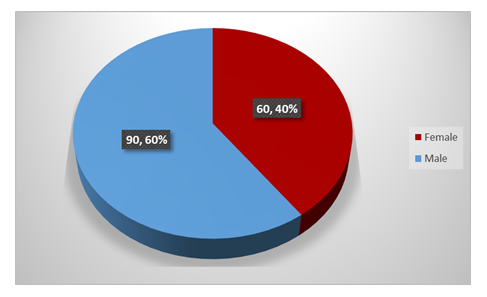
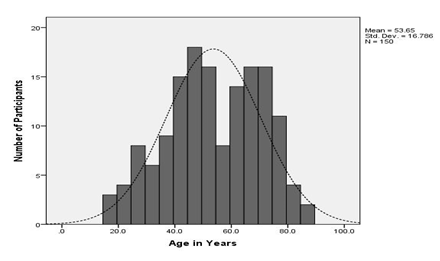
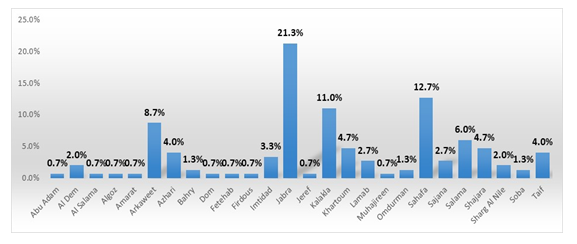
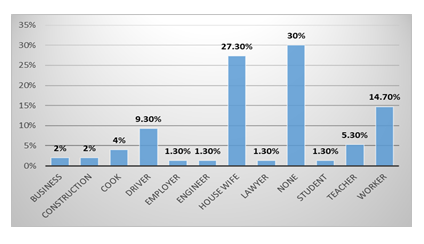
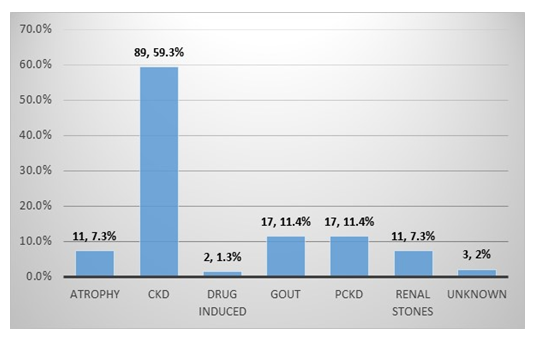
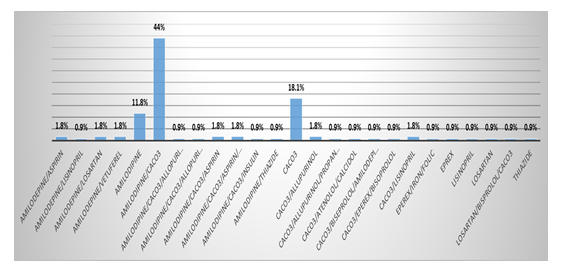
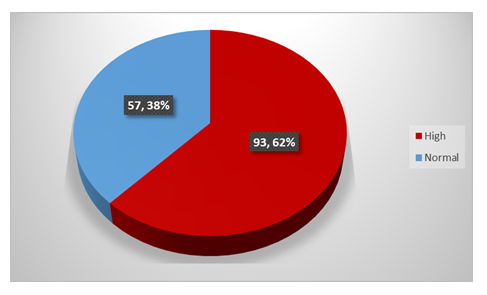

 Impact Factor: * 5.6
Impact Factor: * 5.6 Acceptance Rate: 74.36%
Acceptance Rate: 74.36%  Time to first decision: 10.4 days
Time to first decision: 10.4 days  Time from article received to acceptance: 2-3 weeks
Time from article received to acceptance: 2-3 weeks 